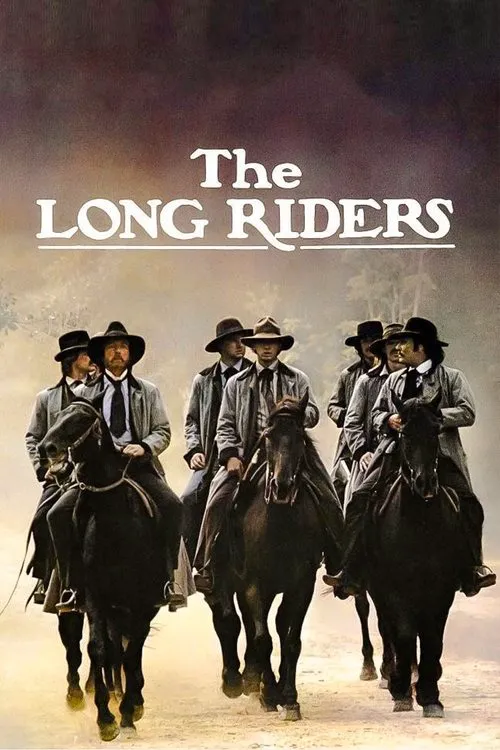The Long Riders

Plot
The Long Riders, released in 1980, is a unique and captivating biographical drama film that delves into the infamous exploits of the James-Younger gang, one of the most notorious outlaw groups in American history. Directed by Walter Hill and executive produced by Steven Spielberg, the film takes a sympathetic and often romanticized approach to its story, focusing on the relationships and motivations of the gang members. The film begins in the early 1860s, with the story centered on the tensions between the pro-Confederate South and the growing power of the Union Army. Jesse James, the charismatic and cunning leader of the James-Younger gang, is portrayed as a driven individual, fueled by a desire for revenge against the North for the death of his family by a band of bushwackers. These men were allegedly supported by the Union government who ordered their raid as a punitive measure on pro-secessionists. Jesse, along with his brother Frank and several other friends, vows to avenge his family's bloodshed, setting the stage for their notorious bank robbery spree. At the heart of The Long Riders are the intricate relationships between the gang members and their families. The James brothers, Jesse and Frank, are depicted as incredibly close, sharing a deep-seated loyalty and trust. Their relationships with other gang members, like Cole Younger and his brothers, Jim and John, are also explored in depth, highlighting the complexities and tensions that arose within the group. Throughout the film, Walter Hill's direction masterfully juxtaposes the law-abiding aspects of the characters' lives with their life of crime. The gang members are shown as charming and charismatic figures, often receiving sympathy and admiration from those they encounter. This portrayal creates a clear sense of moral ambiguity, making it harder for the audience to categorize the gang members as purely evil. One of the most notable aspects of The Long Riders is its use of visual and musical elements. The film features a stunning score by Ry Cooder, which incorporates a blend of country, blues, and folk music to create a haunting and evocative atmosphere. The cinematography, handled by Philip H. Lathrop, captures the American landscape in a way that feels both nostalgic and epic, drawing the viewer into the world of the film. As The Long Riders unfolds, the gang's exploits are depicted in thrilling detail, with a series of daring bank robberies and shootouts. The tension builds as the gang faces increasing pressure from the authorities, including the legendary Sheriff James tim Johnson who becomes a central authority trying to stop their outlaw activities. The film also explores the psychological toll that the gang's actions take on its members, particularly Jesse James, who begins to question the morality of their actions. Ultimately, The Long Riders is a film that raises more questions than it answers about the nature of the James-Younger gang. Rather than simply portraying them as one-dimensional outlaws, the film invites the viewer to empathize with their motivations and experiences. While the film's sympathetic portrayal of the gang has been both celebrated and criticized, one cannot deny the impact and influence it has had on the way we think about the American outlaw tradition. In conclusion, The Long Riders is a gripping and thought-provoking film that brings to life the complex and often tragic story of the James-Younger gang. With its rich characters, haunting music, and sweeping cinematography, the film is a must-see for anyone interested in the American outlaw tradition and the complexities of human nature.
Reviews
Recommendations




